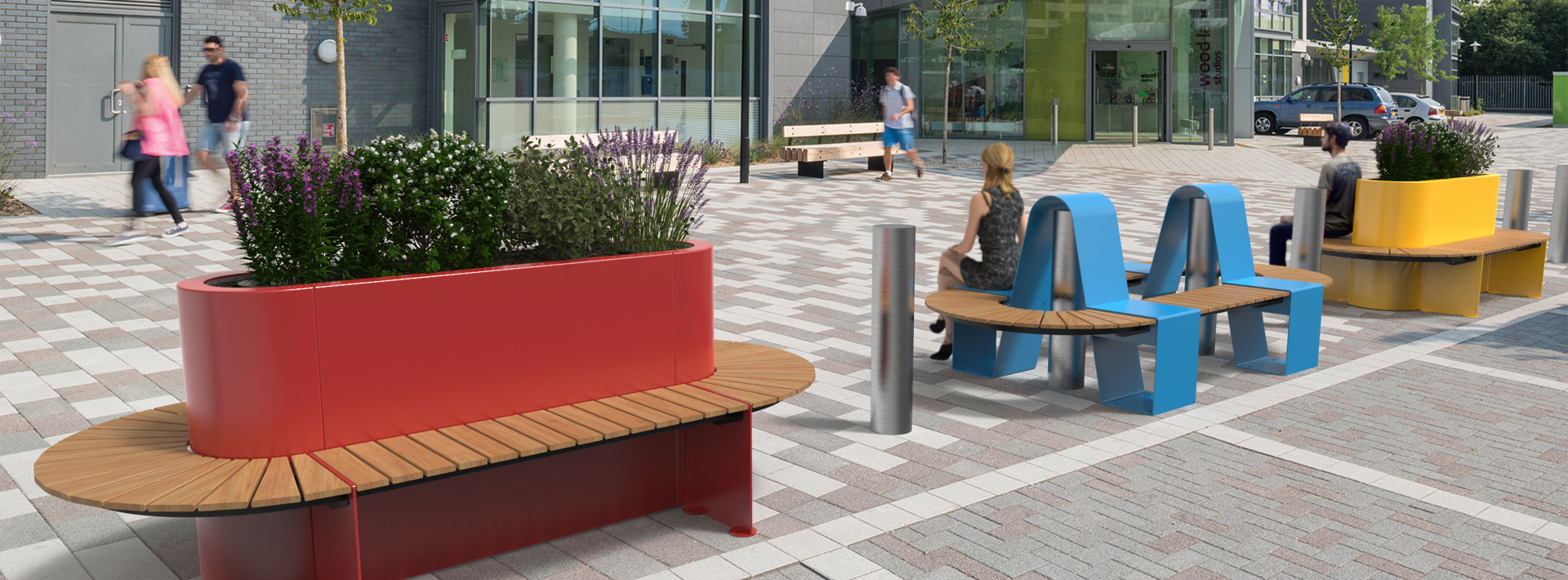Blog
Crash testing is a huge part of the product development process at Marshalls Landscape Protection, with significant cost and time spent to ensure that our Hostile Vehicle Mitigation (HVM) products perform effectively. Roger Knight, Head of New Product Development & Engineering at Marshalls, discusses the product design and testing process, from set-up to findings, and explains why crash testing is vitally important.
The Design Process
Irrespective of the HVM product that we are designing, whether that be a planter, a bollard or a seat, the first thing we determine for a product is the rating that we want it to achieve. At Marshalls, a core principle for us is ensuring that we deliver street furniture products that provide effective protection but importantly, also offer pleasing aesthetics. Therefore, although we will be aiming to achieve a certain rating, our goal is to achieve this without a detrimental effect on the visual appeal of the product. Thankfully, the majority of a product’s performance is determined by factors hidden underground within its foundations, which means we can implement considerable changes to how a product functions with minimal aesthetic disruption.
Due to our extensive experience of impact crash testing, we have collated a vast bank of data that details how certain technologies perform and assists us during the design process of a new product. Using this data, we finalise a concept design and once we are happy as a team, we then look to book it in for its crash test.
The Crash Test Process
Impact crash testing is a critical part of the development stage. It provides the only opportunity to learn how the product, and the technology behind it, perform in a real-world scenario. Whether through successes or failures, crash tests allow us to gain a better understanding of which components worked and which didn’t, enabling us to take that knowledge forward in future product development.
We test our products to the PAS 68 and IWA14-1 standards, which are the recognised impact crash test standards for the UK and internationally. All impact crash tests are carried out at an accredited test facility. In the UK, there is only one such facility, MIRA.
Typically, the process would begin with us attending site to install the product. Typically if using a concrete foundation it will be left there for at least a week, so that the concrete has ample time to cure properly. MIRA provide the vehicle based on the performance criteria we have asked them to test against. For the lower weight categories, such as the 1.5 tonne saloon car, the vehicle used in testing must also be no more than five years old. This is to ensure we are testing the most relevant vehicles on the road because vehicle design changes rapidly. For heavier weight categories, this is extended to ten years, as design changes are not as frequent.
On test day, MIRA will set up the test to ensure that it complies with the regulations detailed in the PAS68 or IWA14.1 standard. Watching the impact crash test take place is both a very exciting but also nervous spectacle, as first and foremost we want the product to succeed. The test uses many cameras to capture what happens including overhead footage. Immediately after the test, we have a short time to assess what happened and do this by reviewing the vehicle damage and as well as the product damage.The test house will also take a large amount of photos of the scene before and after the impact. MIRA will then start to conduct their analysis using the videos and onboard vehicle transducers. Some of the most valuable information is usually gathered when the vehicle is removed and the product is dug up as you can see how the foundations fared. Following the test, MIRA will provide us with a full performance report that details all the factors and conditions that were present on test day, including the videos and photos.
Naturally, these reports are always on hand to help us guide our customers, so that they are fully aware that the results found were on a given day, in specific conditions. It is crucial that this is understood by the customer because if that vehicle had been taller, wider, heavier or travelling at a different speed, the performance could be affected.
Why Do We Do Crash Tests?
Above all else, we conduct impact crash tests so that we can be certain that a product will perform to the standards that we believe it will. Additionally, without testing, a customer cannot feel fully confident that the product will provide the necessary protection. Of course, impact crash test also acts as an excellent learning exercise. When assessing the performance of a product, we can work out that if the vehicle had been travelling a little faster or had approached from a slightly different angle, what the outcomes would have been. This allows us to determine the thresholds that we are working between. It is a valuable tool for helping design complete schemes for a customer as not all sites are the same and not all areas of a site will need the same level of protection. Within the Marshalls team we are able to offer guidance based on our extensive knowledge of testing and product performance.
Our core ambition at Marshalls Landscape Protection is to ensure that our products keep people safe not scared. While we can design aesthetically pleasing street furniture with functionality that enhances the public realm, the only way to guarantee that our commitment to keeping people safe is met, is through crash testing.
To find out more about our HVM product portfolio, please visit our website: https://www.marshalls.co.uk/commercial/landscape-protection








